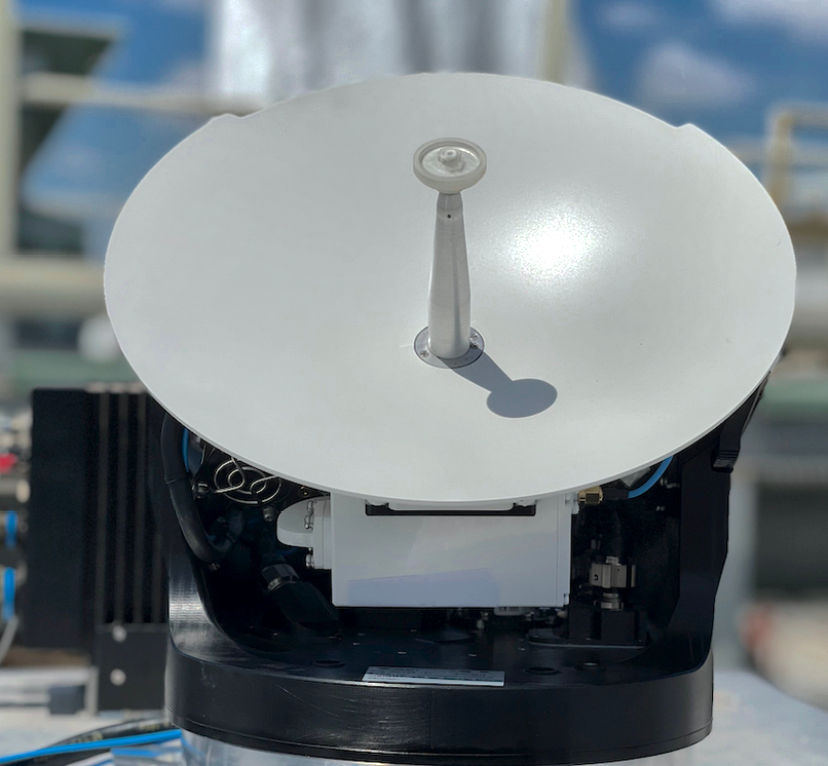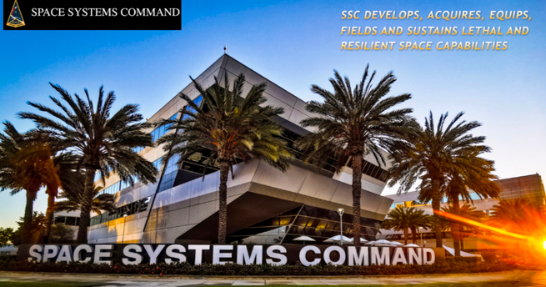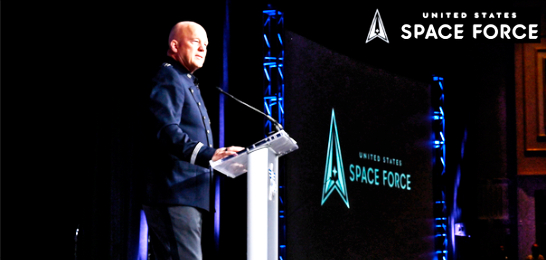Leidos secures $1.5 billion Sentinel award
Leidos (NYSE: LDOS) has been awarded a prime task order to support the Department of Defense.
The task order holds a ceiling value of approximately $1.5 billion if all options are exercised and includes a one-year base period of performance, with four additional one-year option periods. Work will be performed worldwide.
Through this contract, Leidos will use Command, Control, Computers, Communications, Cyber, Intelligence, Surveillance and Reconnaissance (C5ISR) capabilities to enhance technological innovation with a focus on rapid insertion of technologies across the mission spectrum, for multiple services, and integrating new technology with existing and legacy systems for enhanced effectiveness.
Leidos will support the government with rapid technology insertion to enhance C5ISR missions at global scale. This award enables Leidos to expand upon its extensive C5ISR support to the warfighter as well as deliver a critical capability towards improved warfighter support.
“In today’s battlefield, the command who has actionable multi and cross domain data fastest is the one with the high ground,” said Gerry Fasano, Leidos Defense Group President.
“Leidos has finely tuned our portfolio of expertise and developed a dynamic enterprise suite of C5ISR solutions, including Joint All-Domain Command and Control (JADC2) tools to ensure our warfighters exploit state-of-the- art technology to maintain their decisive advantage and enable joint synergy for operational superiority. We are honored to support this critical mission, providing readiness against evolving global threats.”
BAE Systems’ NetVIPR™ — a pioneering new military Comms network
BAE Systems has unveiled their latest deployable networking product, NetVIPR™, which provides intelligent and secure military communication networks linking everything from small reconnaissance drones to combat vehicles, fighter jets, aircraft carriers or military commands.
The modern, multi-domain battlefield that comprises land, sea, air, space, cyber and electronic warfare is hugely contested and it is vital that militaries maintain control of their communications in this challenging environment. NetVIPR™ uses the full spectrum of communications infrastructure to avoid being solely reliant on satellites or fixed infrastructure which are often targeted by adversaries, so will be much more able to sustain a communications network through a myriad of offensive challenges.
NetVIPR™ is made up of a series of nodes and each node in the secure network is able to add, access and move data. This means that even if some nodes are damaged in warfare, the rest automatically re-route to maintain optimum network speed and flow of information, making it highly resilient.
Traditional military networks rely on hardware being set up and then maintained by specialists.
As NetVIPR™ uses software to perform functions usually carried out by hardware it can be updated from remote locations instead of the frontline, providing uninterrupted network access and data transmission.
This ‘plug and play’ approach works with communications hardware found in most military platforms.
NASA awards contracts to assess Near-Space Comms capabilities
NASA has selected two companies – Kongsberg Satellite Services (KSAT) USA of Denver and SpaceLink Corporation of McLean, Virginia.

These companies will develop capability studies to explore and demonstrate communications and navigation services in support of Artemis missions to the Moon.
The awards, under the Next Space Technologies for Exploration Partnerships-2 (NextSTEP-2) Broad Agency Announcement (BAA) Appendix O, are firm fixed- price milestone -based contracts in the amounts of $161,638 for KSAT and $189,881 for SpaceLink Corporation. The studies will involve Direct-to- Earth and lunar space relay communications and navigation services that would enhance telemetry, tracking, and commanding services for orbital and sub-orbital missions at the Moon.This will be accomplished through relay of critical data between spacecraft and ground stations NASA’s Space Communications and Navigation (SCaN) program oversees the agency’s two primary networks: the Deep Space Network and the Near Space Network.
The latter program provides services to missions within 2 million kilometers of Earth through a blend of government and commercial providers. These studies are intended to inform NASA and its stakeholders on industry’s capabilities and concepts that would enable a commercial space communications and navigation marketplace where NASA is one of many customers.
The companies will help NASA and its stakeholders understand advancements in RF compatibility testing that will lead to Near Space Network efficiencies, address industry best practices, tools, and capabilities related to mission planning and scheduling, understand the barriers, challenges, and solutions associated with integrating optical communications ground terminals into the Near Space Network, and understand the advancements of software-defined radios (SDRs) and cloud computing assets and their integration into the Near Space Network architecture.
Orbit’s GX30 Terminal’s full type approval now operates on Inmarsat Global
Xpress’ commercial and military Ka-band networks Inmarsat and Orbit Communications Systems Ltd.’s Orbit GX30 airborne Ka-band multi-purpose terminal (MPT) received full type approval for use over Inmarsat’s Global Xpress (GX) network for commercial and military Ka-band (Mil Ka).

The GX30 terminal fulfills the ‘everywhere, all-the-time’ coverage requirements of both military and commercial airborne users and allows government users to roam between commercial Ka-band and Mil Ka services.
This low size, weight and power (SWaP) user terminal delivers up to 126 Mbps forward link and up to 29 Mbps return link, maintaining uninterrupted connectivity during all flight phases.
Comprised of three Line Replaceable Units, the GX30 terminal consists of a Radio Frequency antenna assembly, a Ka-band Power Supply Unit and a Modem Unit that includes Inmarsat’s G-MODMAN II solution. GX30 can be installed on a range of business jets, military aircraft and uncrewed aerial vehicles (UAVs) and complies with industry standards including MIL-STD-188-164C, RTCA DO- 160G, Federal Communications Commission (FCC) 47 CFR 25.218 and European Telecommunications Standards Institute (ETSI) EN 303 978.
The terminal is compatible with military satellite systems, helpful for government airborne Intelligence, Reconnaissance and Surveillance (ISR) applications.
Tuomo Rutanen, VP Sales and Business Development – Americas, Orbit Communications Systems, said “We are proud of this cooperation with Inmarsat. This GX30 design, coupled with Inmarsat’s Global Xpress network, make it an ideal solution for U.S. government missions that transmit large volumes of data, including military aircraft and UAVs.”
Inmarsat’s GX serves as an example of the company’s first, seamles,s mobile commercial wideband service available.
Matt Wissler, Chief Technology Officer, Inmarsat Government, said, “With its best-in-class performance plus its low size, weight and power requirements, GX30 is a game changer for demanding aero applications. It ensures access to an easy-to-use, reliable wideband mobility solution for increased agility, interoperability, and worldwide coverage.”
He continued, “Inmarsat Government is pleased to continue our partnership with Orbit to deliver innovative, forward-looking satellite communications solutions that support today’s complex missions. Inmarsat is sustaining its market leadership through a substantial investment and a powerful network of technology and manufacturing partners. This ongoing innovation provides a fast, cost-effective solution to the U.S. government’s critical need for resilience, speed, and agility to ensure mission success today and in the future.”
Defense-Focused Survey Reveals Military Personnel Concerned About Communications Being Surpassed By Adversaries And Lack Of Current Action
Despite signs of improving U.S. defense communications reliability, the survey points to growing concern among Department of Defense (DoD) personnel about U.S. military communications’ capabilities being surpassed by adversaries and a lack of current action being taken to address this challenge Viasat Inc. announced theresults from its Annual State of Military Communications study conducted by the Government Business Council (GBC), the research division of Government Executive Media Group.

Despite signs of improving U.S. defense communications reliability, the survey points to growing concern among Department of Defense (DoD) personnel about U.S. military communications’ capabilities being surpassed by adversaries and a lack of current action being taken to address this challenge.
A copy of the complete survey may be obtained via this direct link...
According to the third annual survey, more than two-thirds (68%) of respondents said they believe near-peer adversaries will match or surpass U.S. military communications capabilities within five years, including 36% believing this will happen in the next two years.
In addition, nearly three-quarters (73%) of DoD respondents believe that U.S. defense communication technologies are on par with or falling behind those used by adversaries, which represents a 13-percentage point increase from 2020.
These findings come despite DoD personnel also reporting greater reliability in their own experience with defense communications.
More than half (52%) of respondents said they rarely or never experience a complete loss in connectivity, a significant increase from 34% in 2020 and 24% in 2019, indicating steady year-over-year improvement in reliability.
However, 85% of respondents still reported experiencing at least one such disruption in the last year.
Other key findings from the survey include:
Actions aren’t aligned with beliefs yet on communications improvements and value in commercial capability
• 83% of respondents said they believe improvements to defense communications should be a top or high priority for their agency compared with other priorities. Also, a majority (55%) of respondents agreed commercial capabilities can deliver the same or better levels of performance compared to DoD purpose- built communications.
• Additionally, more than half of respondents (59%) agreed increasing the use of commercial solutions is critical to accelerating strategic initiatives such as Joint All-Domain Command and Control (JADC2) or other joint warfighting programs.
• However, when asked if their agency would adopt commercial defense communications technology and services in the next year to keep pace with adversaries, just 33% said commercial communications adoption was very (26%) or extremely (7%) likely to happen.
• Similarly, just 35% of respondents said their agency was taking advantage of new acquisition processes and mechanisms like OTAs and as-a-service models to help update defense communications technologies.
Space-based networks and commercial solutions needed for future warfighting
• More than three-quarters (77%) of respondents agree the future fight will require advanced space-based networking capability to meet operational and mission needs. But, despite acknowledging the importance of space networks, just 19% said their agency was actively investing in advanced satellite communications to support modern warfighter needs.
Cyber-attacks on defense communications technology/ infrastructure remain a challenge
• 40% of respondents feel their agency is adequately prepared for a cyber-attack on defense communications technology/infrastructure. While this may signal an improvement from 2020, when only 24% of respondents were very or extremely confident in their agency’s preparedness for a cyber-attack on defense communications, it is still concerning that nearly three in 10 respondents (28%) don’t think their agency is adequately prepared for such a cyber-attack.
Next-gen technologies needed to advance defense communications, but investment is lagging
• Artificial Intelligence (AI), cloud computing and 5G technology were the top technologies selected by respondents to advance defense communications capabilities. However, active investment in these technologies appears to be lagging with just 27% of respondents saying their agency is actively investing in AI and 26% in 5G. Cloud was the biggest priority next- gen technology, with 37% saying their agency is actively investing in cloud to support defense communications.
“In its third year, the State of Military Communications survey highlights both encouraging and concerning trends surrounding the future of U.S. military communications. Government is recognizing the need to modernize defense communications and the value of commercial capabilities,” said Craig Miller, president of Viasat Government Systems. “However, cultural change is often more difficult than technological change. DoD personnel see adversaries closing the capabilities gap and know new approaches are needed if the U.S. is going to maintain an advantage. Multi-domain communications and data transport is not only vital to missions, but it will likely be a deciding factor in future conflicts.”
Space Systems Command issues million$$$ contract to SciTec
Space Systems Command‘s (SSC) Future Operationally Resilient Ground Evolution (FORGE) program has awarded a Cost-Plus Incentive Fee contract for $272 million to SciTec Inc. for Mission Data Processing Application Provider (MDPAP).

MDPAP will deliver critical applications for the nation’s missile warning mission in direct support of the Space Based Infrared System (SBIRS) and the Next-Generation Overhead Persistent Infrared (Next-Gen OPIR) program.
MDPAP creates applications critical to the OPIR mission, consisting of Missile Warning (MW), Missile Defense (MD), Battlespace Awareness (BA), Technical Intelligence (TI), and Civil/Environmental (C/E).
MDPAP applications are integrated with the modular, scalable and extensible Mission Data Processing Applications Framework (MDPAF) which provides a modern and cyber-secure platform to develop, manage, and host MDP applications.
The MDPAF is being developed by Raytheon Intelligence & Space, Aurora, Colorado.
FORGE employed an acquisition approach that ensures flexibility, modularity, and scalability in its contracts, enabling greater commercial participation to spur innovation and promote enterprise solutions.
The initial prototyping contract was accomplished through the Space Enterprise Consortium Other Transaction Authority (SpEC OTA) which provides access to traditional and non-traditional contractors through OTAs.
The OTA’s innovative contracting process allowed SpEC to solicit bids from non-traditional companies. This process deducted at least six months from the pre- award schedule.
After performing competitive prototyping among three nontraditional companies for one year, the down-select and award went to SciTec.
This unique approach reflects FORGE’s focus on cultivating innovation to deliver capabilities more quickly to the operations community.
SciTec was able to provide early demonstrations of success using resources provided by the Tools Applications and Processors (TAP) Lab located at Boulder, Colorado.
The TAP Lab provides developers access to data from multiple sensors to create and test new software applications and algorithms.
The unique access, infrastructure, and environment provided by the TAP Lab enabled SciTec to focus on their core competencies This approach resulted in capabilities like “ARROW,” an application that performs dim target tracking, and “FLAIMM,” which performs data fusion — both provided core elements for the MDPAP architecture.
SciTec’s development and tuning of advanced algorithms, signal processing and data communications components deliver operational software that can automatically detect, classify and track a target in real time.
SciTec’s code is deployed in satellite ground stations, command and control centers, government laboratories, community clouds, and on-board small satellite systems.
FORGE is the ground system that supports SSC’s Next-Gen OPIR program and continued operations of legacy Space Based Infrared System (SBIRS) capabilities.
FORGE enables maximum use of the OPIR constellation by creating a modular and scalable Mission Data Processing architecture that allows for new OPIR sensors to be rapidly incorporated as new threats evolve.
Further, the government owns the technical baseline, which allows for competition of third-party application developers.
“The prototyping effort under SpEC has allowed us to try before we buy. We had the opportunity to bring USSF Delta 4 operators in to use the applications and shape the look, feel, and function of these applications,” said Col. Dan Walter, Strategic Missile Warning Senior Materiel Leader at Space Systems Command. “The competition drove industry to bring the best of breed products together for best value for the warfighter. This is a no-fail mission, and we’re excited for the game-changing applications being delivered.”
ETL Systems’ nexgen Stingray debuts
ETL Systems has launched the next evolution of StingRay, the company’s RF over fiber range, with additional functionality and flexibility for satellite operations.

RF over Fiber is a dependable and reliable way of moving satellite signals over longer distances than standard coaxial cable.
With fiber modules allowing antennas and IRD (integrated receiver/decoder) modems to be linked from 100 m. to more than 500 km., this is a more efficient and effective medium to transport IF, L- and C-band transmit and receive satellite signals over longer distances.
The new range will be incorporated into ETL’s nexgen Genus platform, designed to offer increased modularity and flexibility for ground stations, including to meet MEO and LEO requirements.
Within the Genus platform, ETL’s new StingRay RF over Fiber products cover a comprehensive range of frequency bands including new C-Band links operating over 500MHz to 6725MHz.
The new StingRay system offers manual gain control (MGC) as well as fixed gain and automatic gain control (AGC) modes, providing operators with greater flexibility while setting links up for optimized system performance.
In addition, the platform can house StingRay modules alongside ETL’s Falcon frequency converters, ALTO amplifiers, switches, splitters and even small RF matrices/routers within the same indoor or outdoor chassis.
Combining these functions within the same chassis offers a reduction in cost and rack space requirements and improves resilience.
Along with improved security aspects (SNMPv3 and HTTPS) included with the Genus chassis, the updated StingRay modules offer improved RF performance, while maintaining the same industry-leading capacity of up to 32 optical transmit and/or receiver modules within a single 2U indoor chassis.
As an example of how the new StingRay range can be combined with other ETL products in the Genus platform: at a remote antenna site, 4 x StingRay L-Band Tx modules could be housed with 4 x Falcon downconverters (e.g., Ku- to L-Band) to transmit the downlink signals across site to the receiver location, where the StingRay L-Band Rx modules can be combined with RF processing products such as matrices, switches, splitters etc, dependent on requirements.
Any of these ETL components can be housed within Genus 19” indoor chassis or the new Genus IP65-rated outdoor unit.
Esen Bayar, ETL Systems chief executive officer, said, “StingRay in Genus is a major step forward in ETL’s product development and we are very proud of what we’ve achieved. With flexibility of growing importance to businesses working across the SATCOM industry, as well as the pillars of resilience and redundancy, the ETL engineers have meticulously worked to create a truly unique product addressing the needs of the industry.”
Ursa Major’s U.S. Air Force Contract to Develop Flight-Ready Rocket Engine for Launch in 2022
Ursa Major is America’s only privately funded company that focuses solely on rocket propulsion has announced a contract under the U.S. Air Force Tactical Funding Increase (TACFI) program.

Under the agreement, Ursa Major will provide a flight-qualified 5,000-pound thrust, oxygen-rich staged combustion “Hadley” rocket engine, suited for both the booster and upper-stage phases of launch for satellites into LEO orbit.
While more challenging to engineer than other systems, oxygen-rich staged combustion (ORSC) is more efficient for better engine performance and is the architecture preferred by the world’s advanced space programs. This effort continues to build upon past investments into ORSC technology by the Air Force Research Laboratory (AFRL) to provide ORSC systems to the nation.
Hadley was developed by Ursa Major’s team of world-class propulsion experts, who have more than 1,000 combined years of collective engine development experience on numerous successful launches and engine programs. Like all Ursa Major engines, Hadley delivers high performance, flexibility, and reliability at a significantly lower cost by using advanced manufacturing (3D printing) and a technology-first, market-driven design approach.
Hadley features active throttle, active thrust vector control, and a configurable fuel mixture ratio. It is qualified for operation in flight at various power levels and capable of continuously throttling from minimum to nominal flight power levels. Ursa Major has already delivered numerous Hadley engines to customers from its uniquely integrated 90-acre Colorado facility, which houses its engineering, manufacturing, and testing functions on a single property.
“We are proud of the Air Force’s continued support and recognition of Ursa Major’s leadership in developing reliable, high-performing, American-made rocket propulsion,” said Ursa Major founder and CEO, Joe Laurienti. “Choosing Ursa Major and the Hadley engine means more U.S. satellites in space, which is more important than ever for our national security and global technical leadership.”
As part of the AFRL contract deliverables, Ursa Major will also be providing the Air Force Research Lab (AFRL) with statistically significant data sets from extensive testing of multiple Hadley engines, including measurements of specific impulse, or ISP, combustion stability, vibration and shock profiles, and range of inlet pressures and temperatures.
Hadley will be qualified using similar metrics according to an internal test plan based on industry guidelines and best practices, focusing on engine life, operating space, functional requirements, and performance. The qualification test campaign under this effort will include runtime at and beyond the extremes of the power level and mixture ratio targets, demonstrating that Hadley operates safely and reliably within the power level and mixture ratio required for missions of DoD interest.
The company’s customers get to launch faster and without the development cost of building engines in-house. Ursa Major has built and tested more than 50 staged-combustion rocket engines and plans to deliver 30 to customers by year-end. Ursa Major engines have accumulated more than 50,000 seconds of runtime.
General Raymond’s Reflections
Article by Charles Pope, Secretary of the Air Force Public Affairs
In a speech that was as much an unofficial farewell as a proud update of the U.S. Space Force’s (USSF) youthful evolution, Chief of Space Operations, General John “Jay” Raymond told an influential audience on September 20th that the service is on a strong footing and that the USSF has deftly avoided two, major traps.

The first, Raymond told Guardians and Airmen during his keynote address at the Air Force Association’s Air, Space & Cyber Conference, is “that we wouldn’t think bold enough. The second challenge was that when we did think bold the bureaucracy might stifle our bold thinking. We were dead set against either one of these happening. And if we did this right, we wanted all of the other services looking over our shoulder jealous about what we built because we had an opportunity to start with a clean sheet of paper.”
Raymond’s conclusion is that those pitfalls were avoided and, while much more work is ahead, the achievements and advances since the Space Force was born on December 20, 2019, are impressive.
“The United States Space Force has just begun, and it has a great history ahead. I couldn’t be more excited for the future of the Space Force,” Raymond said.
In a powerful nod to the Space Force’s arrival — and permanence — Raymond closed his 40-minute address by unveiling the official Space Force anthem, “Sempra Supra.” At the same time, Raymond will soon close out a 38-year career split across the Air Force and, in the last nearly three years, as the Space Force’s highest-ranking officer.
Lt. Gen. B. Chance Saltzman has been nominated to replace General Raymond.
With that context and what Raymond called his “terminal count or, in Air Force terms, the ‘short final’ of my career,” he studded his speech with thank you’s, calling out by name Air Force Secretary Frank Kendall, Chief of Staff, Gen. CQ Brown, as well as former Chief of Staff, retired Gen. David Goldfein.
He referenced his stint in ROTC at Clemson University, Space Force Vice CSO Gen. DT Thompson and his wife Mary and, most of all, Raymond’s wife Molly, whom he called “my wingman. Not only is she my wingman, she’s our family’s wingman.”
All of them, he suggested, had a hand in bringing the Space Force from a “nearly clean sheet of paper” to where it is today.
While difficult, focusing on space is also critically important, he said, “On 20 December 2019 the United States took an opportunity to elevate space to a level commensurate with its importance for our nation; an opportunity to enhance global security by amplifying deterrence, increasing the lethality of our joint and coalition forces that are critical to integrated deterrence. It was an opportunity to firmly establish the United States’ leadership in space and to shape the norms of behavior in the space domain.”
In three years, the Space Force has grown to 16,000 personnel and demand for spots among the highly specialized force is strong, Raymond said. A large reason, he said, is that the Space Force developed six core focus areas and has worked tirelessly to build the nation’s first new military service since 1947 around each one. They are: Recruit, Assess, Develop, Care for and Retain its People; Write its own Doctrine… similar to what the Air Force did leading up to its independence; Build its own budget; Design its Force, both from an organizational and force structure point of view Ready the Force; Present the Force to Combatant Commands.
As he has frequently in the past, Raymond highlighted the Space Force’s novel approach to recruiting and training and finding the highly specialized personnel the service needs to accomplish its missions.
“Because of our small size and because we were starting from scratch, we wanted to fundamentally change our ability to develop our most important resource, our people,” he said, noting that the approach required “applying a little more art than science.”
That same philosophy applies to operational aspects of the service. It also applies to how the service modernizes, determines the “space architecture” it needs and how it breaks from military norms and institutes a more nimble, flattened organizational structure On all of it, Raymond suggested that the Space Force is moving in the correct direction.
“As the missile threat continues to evolve, and as threats to our space assets continue to emerge, we must transform our space architectures to be more capable and resilient,” he said. “Organizationally, we flattened our structure to eliminate two layers of command and establish mission-focused Deltas. “
Space Force formed the Space Warfighting Analysis Center (SWAC) “comprised of our smartest Ph.D.s and our best and brightest operators” that became the operational heartbeat of the service, Raymond said. “They first tackled the (missile warning and missile tracking) force design to deliver more effective capabilities in response to the changing missile threat and to diversify the architecture in face of a growing threat to our space capabilities. This is the most consequential work the Space Force has delivered and I am extremely proud of the SWAC team.”
It was rooted in an acquisition strategy that also veers from the norm. Raymond summarized it as, “exploit what we have, buy what we can, build what we must.” Raymond noted that even traditional questions such as “readiness” required a different way of thinking for the Space Force.
“We are leading a fundamental re-think of what readiness means to a force that is primarily employed in place, rather than waiting to deploy overseas,” he said. “We are addressing each aspect of readiness – Do we have the right quantity and mix of people? Do we have the right systems, including ground and space, hardware and software?
And have we met the right basic, advanced, and continuous training requirements? This means a different way of approaching training and sustainment, as well as new ways of reporting this data up to higher headquarters and to the Pentagon.”

